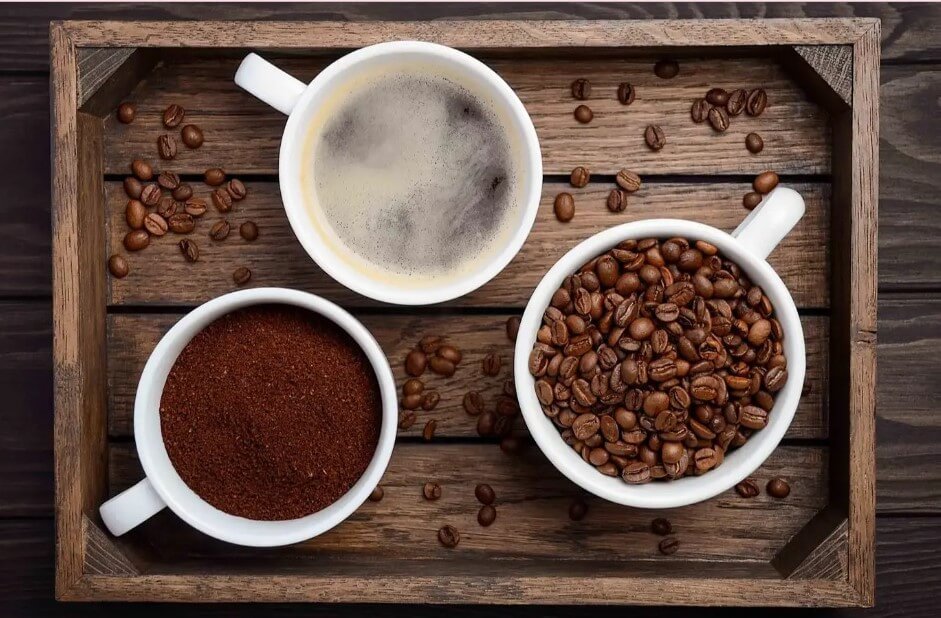How Many Coffee Scoops Per Cup? Coffee to Water Ratios Made Easy: Preparing the perfect cup of coffee is both an art and a science. While the world of coffee enthusiasts can be as diverse as the beans’ flavors, one fundamental question unites them: How many coffee scoops per cup should you use? Getting this ratio right can be the difference between a delightful morning ritual and a disappointing start to your day.
In this article, we will explore the coffee-to-water ratios, making it easy for you to craft that ideal cup every time. Whether you’re a seasoned barista or just starting your coffee journey, understanding these ratios will empower you to create the perfect brew tailored to your taste preferences.
We’ll explore various methods, from classic drip coffee to the boldness of espresso, ensuring you have the knowledge and confidence to transform coffee-making into a satisfying and personalized experience. So, let’s dive into the world of coffee ratios and embark on a journey toward that perfect cup of liquid motivation!
How Many Coffee Scoops per Cup?
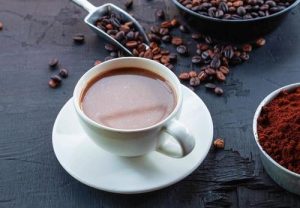
The number of coffee scoops per cup can vary depending on your preferred coffee strength, the type of coffee you’re using, and the size of your coffee scoop. However, a general guideline is to use one to two tablespoons of coffee grounds per 6 ounces (177 ml) of water. Here’s a breakdown:
1. Standard Strength:
If you prefer a standard-strength cup of coffee, start with one tablespoon of coffee grounds for every 6 ounces (177 ml) of water. Correct this ratio based on your taste preferences.
2. Stronger Coffee:
If you like your coffee stronger, use up to two tablespoons of coffee grounds for the same 6 ounces (177 ml) of water. This will result in a bolder, more intense flavor.
3. Weaker Coffee:
For milder coffee, use less than one tablespoon of coffee grounds for each 6 ounces (177 ml) of water. Research until you find the perfect balance for your taste.
4. Coffee Scoop Size:
Be aware that coffee scoops can vary in size, so using a consistent scoop for your measurements is essential. A standard coffee scoop is often equivalent to about 2 tablespoons, but this can differ.
5. Specialty Coffee:
Specialty coffee methods like espresso will have different ratios. Espresso typically requires 1 to 2 tablespoons of coffee grounds for every ounce (30 ml) of water.
Remember that these are general guidelines; your taste preferences should guide you. Feel free to adjust the coffee-to-water ratio to create a brew that suits your palate. Additionally, factors like the grind size of your coffee, water temperature, and brewing time will also influence the final flavor of your coffee. Experimentation is part of the fun of discovering your perfect cup of coffee.
The Golden Ratio:
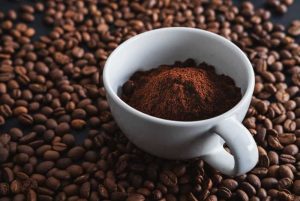
The “Golden Ratio” in the context of coffee brewing typically refers to the ideal coffee-to-water ratio widely considered to produce a well-balanced and flavorful cup of coffee. While the precise ratio can vary depending on personal preferences and the brewing method, a commonly recommended golden ratio is approximately 1:15.
Here’s how it works:
1. Coffee Grounds:
Use 1 to 2 tp of coffee grounds for every 6 ounces (177 ml) of water. This translates to roughly a 1:15 to 1:30 coffee-to-water ratio. Adjust this based on your desired coffee strength.
2. Water:
Measure your water carefully. Ideally, you want fresh, clean water just off the boil (around 200°F or 93°C) for brewing. The water temperature is crucial because it affects the extraction process.
3. Brewing Methods:
Different preparation methods may need slight adjustments to the golden ratio. For instance, a French press may lean towards a 1:15 ratio, while espresso may use a 1:2 ratio or even less.
4. Experimentation:
The golden ratio is a great starting point, but personal taste plays a significant role. Some prefer more robust coffee (higher coffee-to-water ratio), while others like it milder (lower ratio). Feel free to experiment until you find your ideal balance.
5. Consistency:
To consistently achieve great coffee, use a scale to measure your coffee grounds and water. This ensures precision and repeatability.
The golden ratio is a helpful guideline, but it’s important to remember that coffee is a highly customizable beverage. Your taste preferences are paramount, so don’t hesitate to correct the ratio to suit your unique palate. Factors like the coffee bean’s origin, roast level, and grind size will also influence the flavor profile, so there’s plenty of room for exploration and discovery in the world of coffee brewing.
How to Measure Tablespoons of Coffee if You’re Making More Than One Cup?
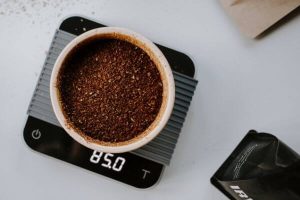
Measuring tablespoons of coffee when making more than one cup is straightforward. You can calculate the amount of coffee you need based on the desired coffee-to-water ratio and the number of cups you want to brew. Here’s a step-by-step guide:
1. Determine Your Coffee-to-Water Ratio:
First, decide on the coffee-to-water ratio you want to use. As mentioned, a standard ratio is 1 to 2 tablespoons of coffee grounds for each 6 ounces (177 ml) of water. Adjust this ratio to your taste preferences.
2. Calculate the Total Amount of Coffee:
Multiply the cups you want to make by the amount of coffee grounds you want to use per cup. For example, if you want to make 4 cups of coffee, and you’re using 2 tablespoons of coffee grounds per cup, the calculation would be:
4 cups x 2 tablespoons/cup = 8 tablespoons of coffee grounds
3. Measure the Coffee:
You can measure the required tablespoons of coffee grounds using a tablespoon or a coffee scoop. Be sure to level off the coffee grounds in the measuring spoon to get an accurate measurement. A standard coffee scoop is often equivalent to about 2 tablespoons, but it can vary, so check its size for accuracy.
4. Brew Your Coffee:
Follow your chosen brewing method, using the measured coffee grounds and the appropriate amount of water. Ensure you maintain the desired coffee-to-water ratio throughout the brewing process.
5. Enjoy Your Coffee:
Once your coffee is prepared, transfer it into your cups or mugs and savor the delicious brew you’ve created.
Following these steps, you can measure the right amount of coffee when making multiple cups, ensuring a consistent and enjoyable coffee experience for you and your guests.
What About Other Measurements?
If you want to use different measurements when making coffee for multiple cups, you can do that. Here’s how in a simple way:
1. Grams:
If you like to be precise, use grams. For every tablespoon of coffee grounds, use about 5 grams. So, if you want to make 4 cups with 2 tablespoons of coffee per cup, you’d need 40 grams.
2. Ounces:
If you prefer ounces, 1 tablespoon is roughly equal to 0.5 ounces. For example, if you want to make 4 cups with 2 tablespoons per cup, you’d need 4 ounces of coffee grounds.
3. Milliliters (ml):
To use milliliters, you must know that coffee grounds are about 0.6 grams per milliliter. So, if you want to make 4 cups with 2 tablespoons per cup, you’d need approximately 67 milliliters of coffee grounds.
4. Cups:
If your coffee maker has cup markings on the carafe, follow those. For instance, if you want to make 8 cups, fill the water to the 8-cup mark and add the right amount of coffee based on your preferred ratio.
You can pick the most accessible measurement for you, and as long as you keep the coffee-to-water ratio consistent, you’ll make great coffee.
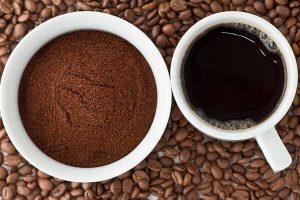
Can I Use These Same Measurements in a Coffee Pot?
Yes, you can use the exact measurements in a coffee pot. Whether using a drip coffee maker, a French press, or any other coffee pot, the coffee-to-water ratio remains essential for brewing a delicious cup of coffee.
Here’s how to use the measurements in a coffee pot:
1. Grams, Ounces, or Milliliters:
You can measure your coffee grounds and water using a kitchen scale or measuring cups if you prefer grams, ounces, or milliliters. For example, suppose you want to make 8 cups of coffee with a coffee producer with a 12-cup capacity. In that case, you can measure out the appropriate amount of coffee grounds and water based on your chosen units of measurement.
2. Cups:
If your coffee pot or coffee maker has cup markings on the carafe, you can follow those markings to measure both the water and coffee. For instance, if you want to make 8 cups of coffee, fill the water to the 8-cup mark and add the correct amount of coffee grounds based on your preferred coffee-to-water ratio.
Remember that regardless of the measurement units you use, maintaining a consistent coffee-to-water ratio is the key to achieving the flavor and strength of coffee you desire in your coffee pot. Adjust the capacities based on your taste preferences, and you’ll brew a satisfying pot of coffee every time.
What’s the Best Way to Measure Coffee?
The best way to measure coffee depends on your personal preferences and the tools you have available. Here are some standard methods for measuring coffee:
Kitchen Scale:
Using a digital kitchen measure is one of the most accurate ways to measure coffee. You can measure coffee grounds in grams or ounces, ensuring precise control over the amount. This is especially useful if you’re particular about your coffee’s strength and consistency.
Tablespoons:
Measuring coffee using tablespoons is convenient and accessible. A standard coffee scoop is often equivalent to about 2 tablespoons. It’s a simple way to measure coffee grounds without any special equipment.
Coffee Scoop:
Many coffee enthusiasts use a coffee scoop, which is specifically designed for coffee measurements. These scoops are usually standardized to hold a specific amount of coffee, typically 1 to 2 tablespoons.
Cup Markings:
If your coffee maker or carafe has cup markings, you can use these to measure both water and coffee grounds. This method is straightforward and convenient for most drip coffee makers.
Eyeballing:
While not the most precise method, some experienced coffee drinkers can gauge the right amount of coffee grounds by eye. This method requires practice and familiarity with your preferred coffee-to-water ratio.
Coffee Grinder Settings:
If you have an electric burr grinder with dosage settings, you can select the desired amount of coffee you want to grind. This can be a convenient way to get consistent measurements if you grind your coffee beans at home.
The best way to measure coffee depends on your preference for accuracy and convenience. A kitchen scale is ideal for precision, mainly for a specific coffee-to-water ratio. However, using tablespoons, a coffee scoop, or cup markings can be adequate for most coffee brewing methods, especially if you’re not aiming for absolute precision. Choose the way that suits your needs and helps you consistently make the coffee you enjoy.
Conclusion:
Precision matters in the world of coffee, but so does personal taste. Finding the perfect coffee-to-water ratio is a journey that balances science and preference. Whether you favor a strong espresso, a classic drip brew, or something in between, you’ve learned that the key to crafting your ideal cup of coffee is understanding how many coffee scoops per cup to use.
As you embark on your coffee-making adventures, remember that the “Golden Ratio” is a valuable starting point, but it’s not a rigid rule. Your taste buds should be your ultimate guide. Don’t hesitate to experiment with measurements, grind sizes, and brewing methods until you discover the coffee that delights your palate.
So, armed with the knowledge of coffee-to-water ratios, whether you’re a seasoned barista or just beginning your coffee journey, you’re now equipped to brew coffee ideally suited to your unique preferences. Sip, savor, and enjoy every cup of the liquid gold that fuels your day.
FAQs:
How many scoops of coffee for 1 cup of water?
If you’re using a standard coffee scoop, typically designed to hold about 2 tablespoons of coffee grounds, then one scoop per cup (assuming a typical 8-ounce cup of water) is a reasonable rule of thumb. So, for 1 cup of water, you would use one coffee scoop, approximately 2 tablespoons of coffee grounds.
What is the golden ratio of coffee?
The “golden ratio” of coffee is a guideline often used in the coffee brewing world, and it suggests using a coffee-to-water ratio of 1:16 or 1 g of coffee per 16 grams (or milliliters) of water. This ratio is commonly recommended as a starting point for making a balanced and flavorful cup of coffee.
If you have 1 cup of water, typically around 8 ounces or 237 milliliters, you will use about 15 grams of coffee grounds. Of course, you can adjust this ratio to your taste preferences, using more coffee for a stronger brew or less for a milder one.
Remember that the “golden ratio” is a general guideline, and coffee brewing can be subjective. The quality of your coffee beans, grind size, brewing method, and personal taste all play a role in determining the ideal coffee-to-water ratio for your preferences. So, feel free to experiment and adjust until you find the perfect ratio for your taste.
What is the simplest golden ratio?
The simplest golden ratio, often denoted by the Greek letter phi (Φ), is approximately 1.61803398875. This irrational number is derived from the Fibonacci sequence and has many interesting mathematical properties. Art, architecture, and design often use it to create aesthetically pleasing compositions.
The golden ratio can be expressed as:
Φ = (1 + √5) / 2
In geometric terms, two amounts are supposed to be in the golden ratio if the relation of their sum to more of the two quantities is the same as the ratio of the greater quantity to the smaller one. This can be written as:
(a + b) / a = a / b = Φ
The golden ratio is often considered aesthetically pleasing and is believed to have a harmonious and balanced quality. It appears in various natural and manufactured structures, such as the proportions of the Parthenon in Athens, the nautilus shell, and even in certain aspects of art and design.
How to make a cup of coffee?
Making a cup of coffee can be done in various ways, depending on your preference and available equipment. Here’s an essential guide to creating a cup of coffee using ground coffee and a drip method, which is one of the most common ways:
Ingredients and Equipment:
- Fresh coffee beans or pre-ground coffee
- Fresh, cold water
- Coffee maker or drip coffee machine
- Coffee filter (if required by your machine)
- Coffee mug
- Grinder (if using whole beans)
- Kettle (if not using a built-in water reservoir in your coffee maker)
- Measuring scoop (optional)
Steps:
- Measure Your Coffee: Determine how much coffee you want to make. A standard ratio is 1 to 2 tablespoons of coffee grounds for every 6 ounces (approximately 177 milliliters) of water. Adjust the amount of coffee to your taste. You can use a coffee scoop or a kitchen scale to measure.
- Prepare the Coffee Maker: Place a coffee filter in your coffee maker with a removable filter basket. You won’t need a paper filter if your machine has a built-in permanent filter.
- Grind Coffee Beans (If Using Whole Beans): If you’re using whole coffee beans, grind them to a medium-coarse consistency, similar to breadcrumbs. The grind size can vary reliant on your brewing method, so check your coffee maker’s instructions for guidance.
- Boil Water: Heat fresh, cold water. Ideally, use water that’s between 195°F to 205°F (90°C to 96°C). If you don’t have a thermometer, you can take the water to a boil and let it sit for a minute to reach the right temperature.
- Add Coffee Grounds: Place the measured coffee grounds into the coffee filter in the filter basket.
- Add Water: Pour the warm water over the coffee grounds in a steady stream. Confirm that all the coffee grounds are saturated evenly. For a standard 8-ounce cup, you’ll need about 1 to 1.5 tablespoons of coffee grounds.
- Brew: Turn on your coffee maker and let it complete the brewing cycle. The water will stream through the coffee grounds, extracting the flavors and aromas.
- Pour and Enjoy: Your coffee is ready to serve once the brewing is complete. Pour it into your coffee mug, and add milk, cream, sugar, and other flavorings to suit your taste.
- Clean Up: After making your coffee, clean the coffee maker, empty the used coffee grounds, and rinse any removable parts for future use.
This is a primary method for making drip coffee. There are many other methods, such as the French press, pour-over, espresso, and more, each with its techniques and equipment. You can explore these methods to find the one best suits your taste preferences.
Is a coffee scoop a tablespoon?
A coffee scoop is typically designed to hold a specific amount of coffee grounds, and it’s often not the same as a standard kitchen tablespoon. While the exact capacity of a coffee scoop can vary depending on the manufacturer, it’s commonly designed to hold approximately 2 tablespoons of coffee grounds.
However, it’s important to note that there is no strict standard for coffee scoops, so their capacity can vary. To ensure accuracy when measuring coffee grounds, you may want to use a standard kitchen tablespoon or a kitchen scale for precise measurements, especially if you’re following a specific coffee-to-water ratio or a particular recipe.

